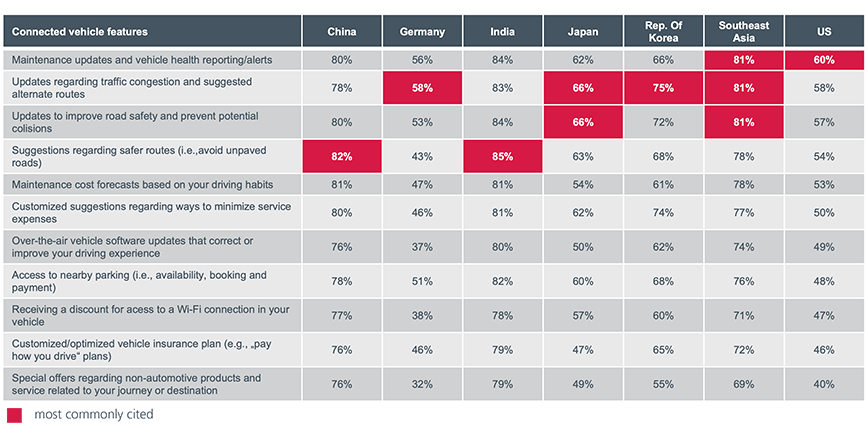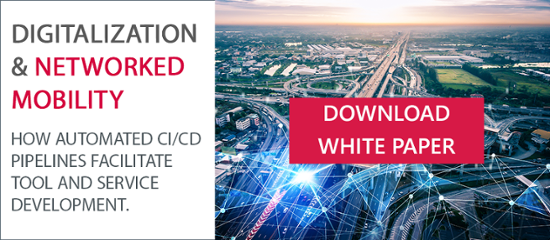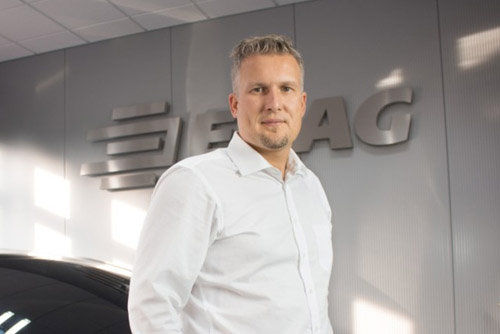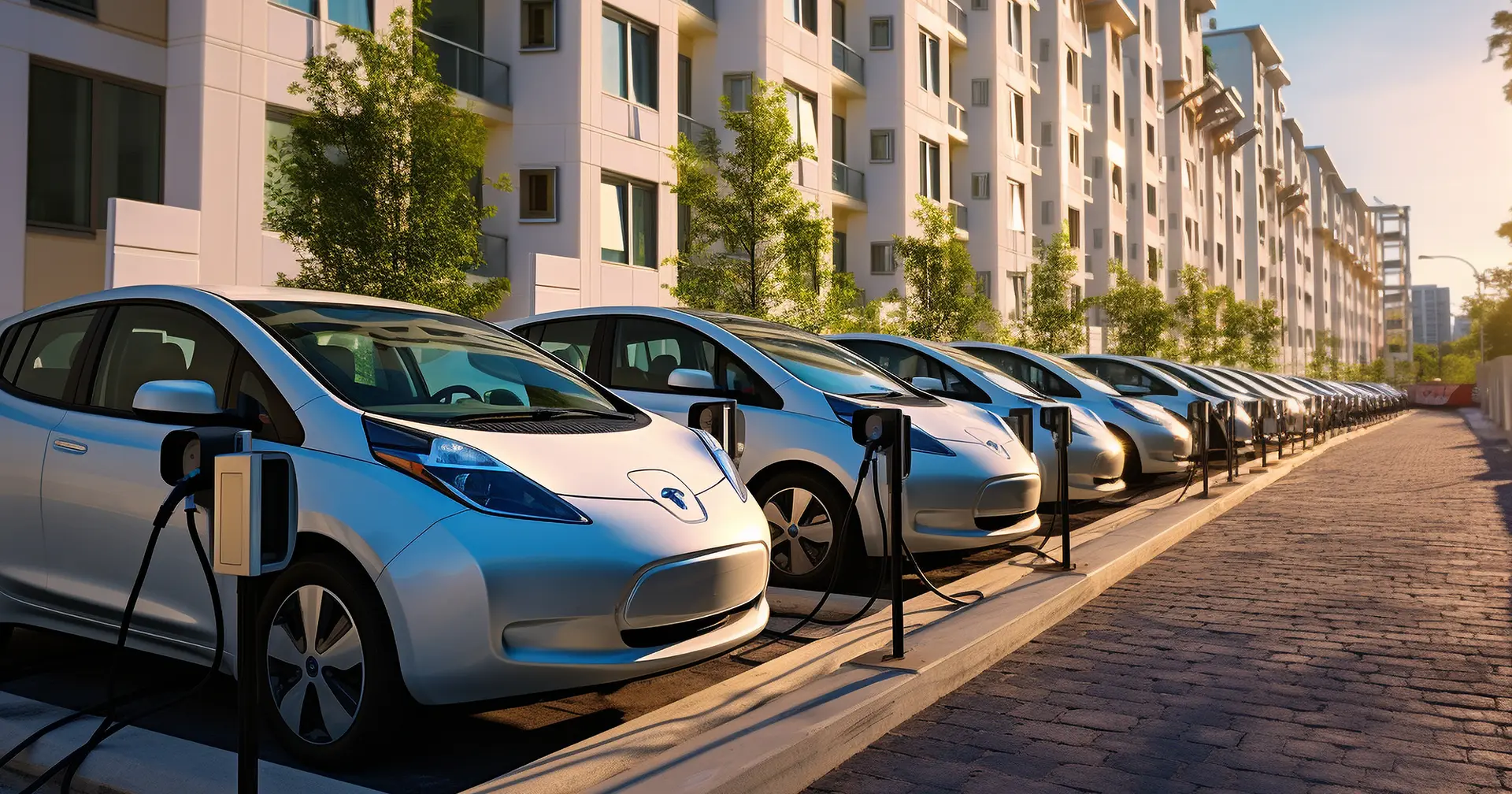How do new digital functions find their way into the car? How can infrastructure operators communicate effectively with vehicles? These are two sides of the same coin – the digitalization of individual transport. But there are no simple answers to these questions. Many different skills are needed to ensure that developments function and are future-proof.
Autonomous driving, connected services, electrification and sharing, in short "ACES", are determining the trends in vehicle development. By the beginning of the next decade, almost all new cars sold throughout the world will already be networked. It is anticipated that, by 2035, some 95 percent of all vehicles on Europe's roads will be equipped with connectivity functions.
From the vehicle manufacturers' point of view, digitalization on the one hand gives them the opportunity to offer interesting functions which will set them apart from their competitors. On the other hand, the users' demands for convenient features can be converted into additional earnings – depending on the application and market, this could be through paid activation when a car is being bought, within the context of a pay-as-you-use payment model, or in the form of subscription fees. According to Statista, the most international popular functions include those for monitoring vehicle health and vehicle updates, for providing current data on traffic events and how to avoid traffic jams, and assistance systems for safe driving and collision avoidance.
Developers require new tools
While the range of functions is continually increasing and drawing on more and more extensive information bases, vehicle manufacturers' developers find themselves confronted with growing problems. They are quite simply running out of tools. High-performance applications, the increase in networking and growing data volumes are leading to a rising complexity that is becoming too great to handle with existing resources. Modern technologies, including cloud applications and the need to integrate different applications, also call for new tools, as do robust cross-platform developments. Also, the increase in both networking and the use of software assistants means that a great deal of effort and energy needs to be channeled into IT security and functional safety.
However, "off-the-peg" software is not generally able to fully meet whatever requirements have been set. The solutions available on the market often only cover certain aspects, necessitating the use of several different applications, and this in turn involves additional time and effort to integrate them – if, that is, they can be combined at all.
An alternative to this situation is to create your own precisely programmed developer tools, which can factor in both the required range of functions and company-specific idiosyncrasies. This calls for a partner who ideally is able to competently cover all aspects of the developer process from a single source: Starting with consulting and process support services, such as the creation of IT concepts, the evaluation and optimization of IT processes, agile management and UX/UI design, as well as ideation, through to the realization, implementation and maintenance of individual software projects.
Complete skills portfolio
In the EDAG Group, this comprehensive service is offered by the Mobility IT department, which is part of the Software & Digitalisation division. At the beginning of such a development, the first thing to clarify is whether the current technology stack is still future-proof, or whether a change needs to be considered. The look and feel of the programming environment, existing business logic and the question of which software applications should continue to be used are as much a part of this kind of development as the management of libraries, templates and modules. As automotive specialists, we combine vehicle development know-how with the agility of software experts, designers and data architects to develop tools for the vehicle's entire life cycle.
To this end, EDAG brings together extensive competencies covering all relevant fields, and is therefore able to offer not only everything from a single source on the development side, but also developed solutions "cast from a single mold" as it were. As a result, experts in UX/UI, app development, web and desktop applications, backend and cloud functions, AI technologies, embedded software, DevOps and consulting are involved. The same applies to IT security, with services ranging through to the development of a sophisticated cyber security management system (CSMS) to protect both the company's cyber security and that of the vehicle throughout its entire life cycle. 
Accelerated Tool Development with EDAG
Connected services
With the networking of vehicles, connected services utilizing this functionality are also making their way into cities and municipalities. One example is the "ILA PARK" project being carried out in Frankfurt/Main, which combines the search for free parking spaces and charging stations with contact-free payment. Other convenience features include advance reservations or being offered suggestions for cheaper parking garages nearby as a way of optimizing costs.
Another application involves mobility hubs for rural areas which, as well as linking motorized private transport (MPT), public transport and sharing service – for both cars and two-wheelers – can also serve as information hotspots. Connected services of this type, which can be seen as aspects of a smart city, are an integral part of the local infrastructure and therefore based on applications offered by their operators, not by vehicle manufacturers. Yet local authorities often have neither the resources nor the know-how to accommodate the extensive requirements of a future-proof smart city application.
Here, too, the EDAG Group offers itself as a partner for the digital networking of the world of mobility. The technology enterprise offers all the necessary skills under a single roof: for smart mobility, the smart infrastructure and smart government. In addition, EDAG shares the values of the municipal bodies, who are required to ensure that the citizens' money is well spent. This includes, for example, the use of open-source technologies and open standards, the principle of "public money, public code," the avoidance of vendor lock-ins, and co-creation projects for joint development across local boundaries. Exciting practical examples of cooperation with local authorities in the smart mobility sector include the "ILAPARK" project and the Open Mobility platform. This includes both a flexible app for users and informative dashboards for the operators. Here is a short introductory video for you to watch.
Skills on both sides
For anyone interested in the field of traffic digitalization, EDAG is a development partner with exceptional expertise, because its IT experts work at both ends of connected services, as it were: On the vehicles, their digital applications and controls and the developer tools required for these on the one hand; and with infrastructure operators and their digital data evaluations and applications on the other.
If you would like to know more about the services and offers of the EDAG Group's Mobility IT department, talk to Heiko Herchet, Vice President Digital Transformation. Our white paper "Digitalized Private Transport Needs a Broad Development Basis" gives a detailed account of the various requirements of transport digitalization. It also provides a checklist for individual tool development and more details on the "Open Mobility" project being carried out in cooperation with towns and cities. Download the PDF here. 





